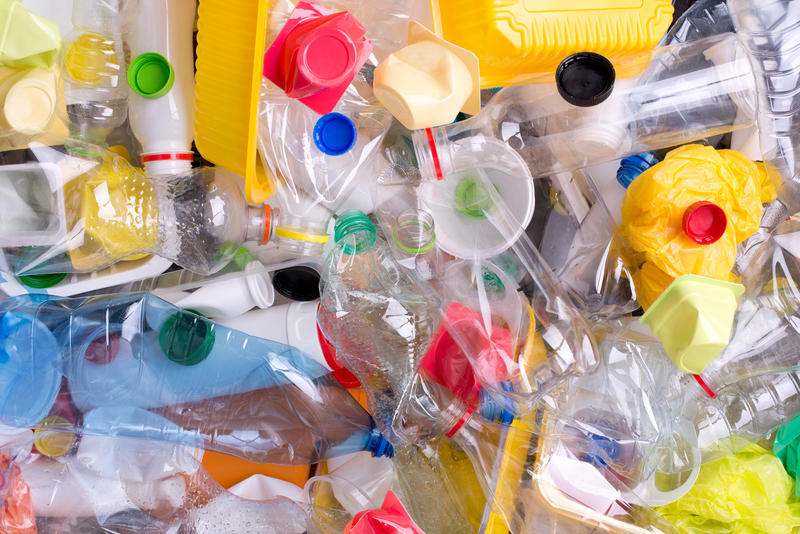Eco-Friendly Ways to Get Rid of Your Used PPE Safely
As the world continues to navigate the impact of health pandemics and growing environmental concerns, the safe and responsible disposal of personal protective equipment (*PPE*) has become a major issue. Used PPE such as masks, gloves, and face shields are now everyday items, but many people are unsure how to dispose of them without harming the planet. In this comprehensive guide, we will uncover the most eco-friendly ways to get rid of your used PPE safely, while minimizing risks to people and the environment. Keep reading to learn best practices, innovative solutions, and actionable tips for sustainable PPE waste management.
Why Is Eco-Friendly PPE Disposal Important?
It's easy to underestimate the environmental damage caused by improper disposal of used PPE. Since most masks, gloves, and gowns are made from non-biodegradable plastics, they can persist in the environment for hundreds of years. Additionally, discarded PPE poses a significant risk to wildlife, marine life, and sanitation workers. Eco-conscious disposal practices help prevent pollution, reduce the risk of spreading infectious diseases, and support sustainability efforts on a global scale.
The Chemical and Pollution Hazards of PPE
Single-use PPE items are typically made from polypropylene, latex, vinyl, and nitrile. Improperly discarded, these materials:
- Break down into microplastics that pollute soil and waterways
- Can entangle or be ingested by animals, causing injury or death
- May harbor viruses and bacteria, posing health risks to waste workers and the public

Understanding PPE Types and Their Environmental Impact
Before exploring eco-friendly ways to dispose of PPE, it's important to recognize the types commonly used and their environmental footprint:
-
Face Masks: Usually made of layers of non-woven plastic fibers, especially in surgical masks and respirators.
These masks can remain in the ecosystem for decades if not disposed of appropriately. -
Gloves: Often manufactured from latex, nitrile, or vinyl.
Vinyl gloves are particularly problematic due to their tendency to release toxic chemicals. -
Face Shields and Gowns: Made using clear plastics and reinforced with synthetic materials.
They contribute to the massive plastic waste problem if not handled correctly.
Main Challenges with PPE Waste Disposal
There are several challenges involved when trying to safely and responsibly get rid of used PPE:
- *Potential contamination* - Disposed PPE can spread infectious agents if not handled correctly.
- *Non-biodegradable materials* - Most traditional PPE will not decompose, contributing to landfill waste.
- *Lack of public guidance* - Many people are unsure of the proper way to dispose of PPE to minimize environmental impact.
Proven Eco-Friendly Methods to Get Rid of Used PPE Safely
1. Reusable PPE Options
One of the most effective ways to reduce PPE-related waste is to switch to reusable options where possible.
- Cloth Masks: Washable and reusable, cloth masks can replace single-use masks for non-medical settings. Choose masks made from organic cotton or recycled materials for added environmental benefit.
- Reusable Gloves: While disposable gloves are essential for medical professionals, many settings allow for the use of thick, reusable rubber gloves that can be disinfected between uses.
- Face Shields: Select sturdy, reusable face shields that can be sanitized, cutting down on plastic waste.
By using reusable PPE when appropriate, you greatly decrease the volume of disposable items entering landfills and the environment.
2. Proper Segregation and Collection
If disposable PPE must be used, the next best eco-friendly step is ensuring correct separation from household recycling and garbage.
- Create a dedicated bin for used PPE at home or work, labeled for easy identification.
- Do not mix PPE waste with recyclables, as contaminated PPE can compromise the recycling stream and endanger workers.
- If available, utilize local hazardous waste collection programs that accept PPE for specialized processing.
Correct segregation helps prevent cross-contamination and supports safe downstream disposal or treatment.
3. Participate in PPE Recycling Programs
Emerging PPE recycling initiatives are providing an eco-friendly way to dispose of used items responsibly. Specialized programs now recycle masks, gloves, and other protective gear.
- TerraCycle and other companies offer Zero Waste Boxes that accept PPE from individuals and organizations, ensuring the materials are converted into raw resources.
- Municipalities in some regions have launched pilot programs for PPE collection and recycling - check with your local waste authority for details.
- Some recycling depots are equipped to process Type IIR and FFP2/3 masks using advanced methods such as pyrolysis, converting plastics into usable fuel or building materials.
Always ensure PPE is thoroughly sanitized or sealed before handing it over for recycling to prevent the spread of pathogens.
4. Safe Incineration and Energy Recovery
When eco-friendly PPE disposal via recycling isn't available, incineration at energy recovery facilities is a safer alternative to landfill dumping.
- High-temperature incineration destroys pathogens while minimizing environmental impact.
- Some facilities capture energy from burning PPE to generate heat or electricity, helping offset fossil fuel use.
- Do not burn PPE at home - home burning is unsafe and illegal in many areas due to toxic emissions.
Incineration under strict environmental controls is preferable to landfill and can contribute to circular waste management strategies.
5. Supporting Biodegradable and Compostable PPE
A promising solution for minimizing environmental harm is switching to biodegradable or compostable PPE alternatives. Eco-friendly manufacturers now offer:
- Biodegradable Masks made from plant-based fibers (such as bamboo, hemp, or cornstarch composites).
- Compostable Gloves crafted from natural rubber latex or compostable bioplastics.
If you use these options, dispose of them according to composting guidelines rather than standard trash removal. Industrial composting facilities may be necessary for effective breakdown of certain compostable PPE.
6. Community PPE Collection Drives
If your area lacks formal recycling or incineration facilities, consider organizing or joining local PPE collection drives. Here's how:
- Coordinate with community groups or environmental NGOs to collect used PPE for centralized, eco-friendly disposal.
- Partner with businesses or local authorities for funding and logistics.
- Spread awareness about correct disposal practices to maximize the impact.
Personal Safety Tips for Eco-Friendly PPE Disposal
Handling used PPE, even when disposing of it responsibly, requires careful attention to personal and public health:
- Always wash your hands thoroughly after handling discarded PPE.
- Seal used PPE in secure bags or containers if placing in the trash or a collection bin.
- Wear reusable gloves when sorting PPE and clean them afterward.
- Avoid reusing single-use PPE items, as this can decrease their effectiveness and increase the risk of contamination.
Following these guidelines ensures that eco-friendly PPE disposal doesn't inadvertently put you or others at risk.
What NOT to Do When Disposing of PPE
-
Do not litter PPE in public areas.
Discarded PPE in parks, streets, or waterways poses significant health and ecological dangers. -
Do not flush PPE down the toilet.
Even items labeled as flushable contribute to sewer blockages and marine pollution. -
Do not combine contaminated PPE with regular household recycling.
This can put recycling workers at risk and potentially contaminate otherwise recyclable materials.
Additional Eco-Friendly Tips for Reducing PPE Waste
- Buy PPE in bulk to reduce packaging waste and carbon emissions from shipping.
- Support brands that prioritize sustainable materials and eco-friendly production processes.
- Advocate for workplace policies that encourage reusable PPE or responsible disposable PPE management.
- Educate others in your community, family, or organization about safe and sustainable PPE disposal.

Innovations Making PPE Disposal More Eco-Friendly
With soaring PPE use across the globe, innovators and scientists are responding with new materials and business models that make PPE disposal safer and more sustainable. Some notable developments include:
- Enzyme-based biodegradation technologies that break down synthetic PPE into harmless compounds.
- PPE upcycling programs that convert collected PPE into construction materials or consumer goods.
- On-site PPE sterilization units for hospitals and large organizations, enabling safer recycling and minimized transportation needs.
Staying informed about these exciting advancements will help you make the best choices as more eco-friendly PPE options become widely accessible.
Conclusion: Make a Green Impact with Safe PPE Disposal
The rise in everyday PPE use does not have to spell disaster for our planet. By choosing reusable and sustainable PPE**, supporting recycling and composting initiatives, and following proper safety protocols, everyone can be part of the solution. Ongoing education and advocacy are critical, as is supporting innovation in materials and waste management. By following the tips and methods outlined above, you can ensure that your used PPE is disposed of in an eco-friendly way--and inspire others to do the same. Together, we can safeguard public health and our environment for generations to come.
Remember: It takes small, consistent actions by individuals and communities to make a lasting, positive difference in PPE waste management. Choose eco-friendly PPE disposal methods, spread awareness, and play your role in building a more sustainable world.
